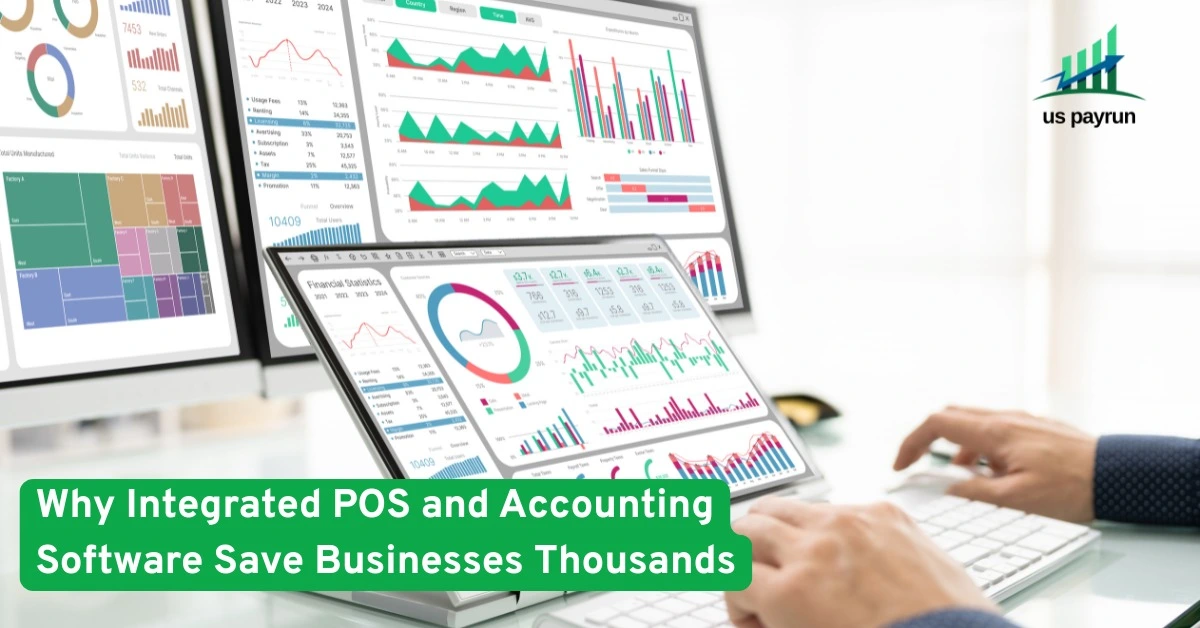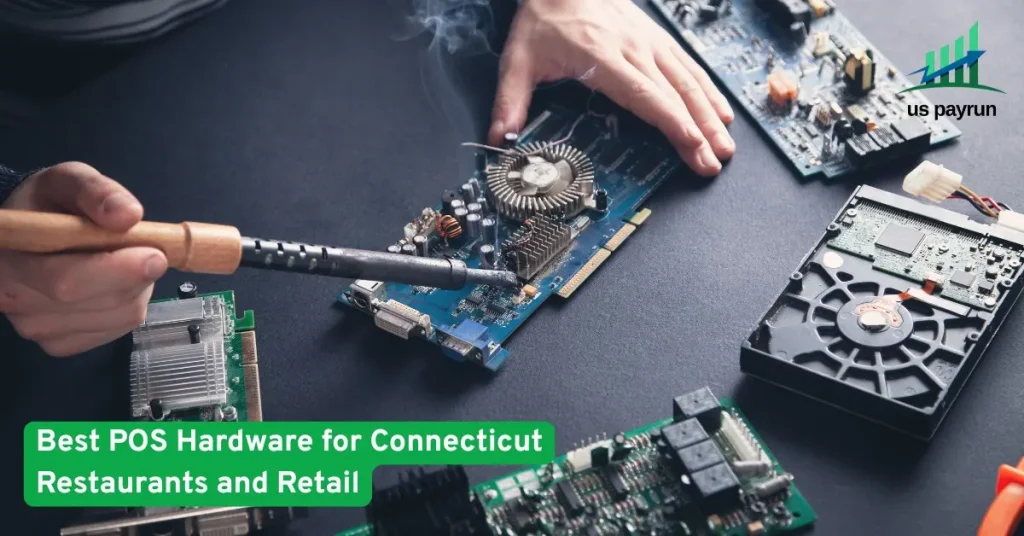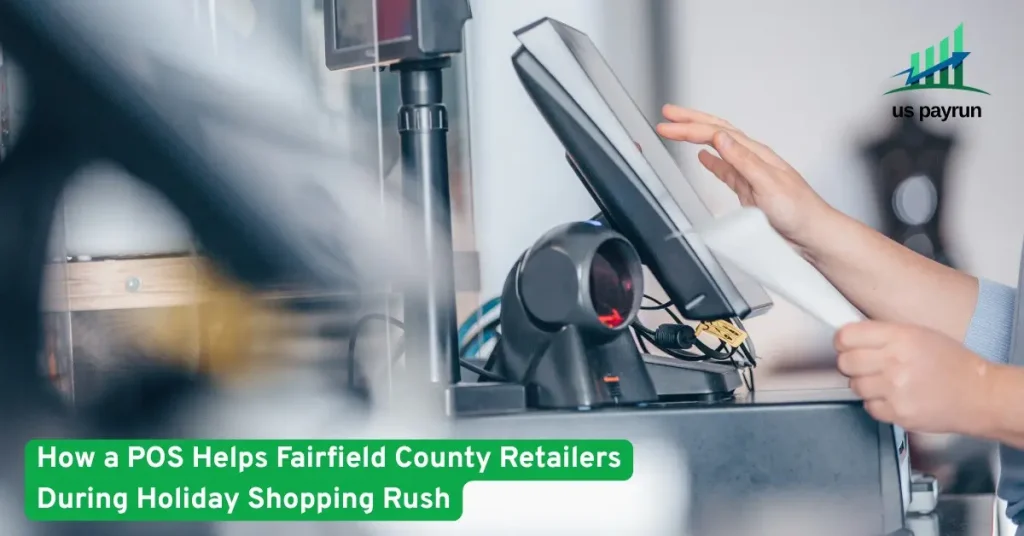
The Hidden Costs of Disconnected Systems
In today’s competitive business landscape, every second and every dollar counts. Yet many retailers, restaurants, and service providers still use separate systems for sales and accounting — leading to wasted time, manual errors, and costly inefficiencies.
The solution? Integrated POS and accounting software — a smart combination that connects your sales data directly with your financial records. This integration doesn’t just save hours of bookkeeping; it can save your business thousands of dollars each year through automation, accuracy, and real-time insights.
1. What Is Integrated POS and Accounting Software?
An integrated system connects your Point of Sale (POS) — where you record sales and manage inventory — with your accounting software that tracks income, expenses, and taxes.
Instead of manually transferring sales data from your POS to accounting platforms like QuickBooks, Xero, or Zoho Books, the integration does it automatically. Every sale, refund, and expense syncs in real time, eliminating manual data entry and reducing errors.
✅ Example: When you make a sale through your POS, the system automatically:
-
Updates your revenue in the accounting ledger
-
Adjusts inventory levels
-
Calculates taxes
-
Records the transaction in customer history
This seamless automation is what gives integrated systems their financial edge.
2. The Financial Impact: How Integration Saves Businesses Thousands
When businesses adopt integrated POS-accounting systems, they gain measurable savings across multiple fronts:
A. Reduced Labor Costs
Manual bookkeeping takes time — and time costs money. Automating sales and accounting synchronization reduces hours of repetitive work.
Average saving: 15–25 labor hours per month = hundreds (or thousands) saved annually.
B. Fewer Errors = Fewer Losses
Data entry mistakes can lead to inaccurate financial reports, wrong tax filings, and inventory mismatches. Integration minimizes these errors by ensuring consistency between sales and accounts.
Estimated saving: Businesses can save up to $2,000–$5,000 per year by avoiding accounting mistakes and tax penalties.
C. Smarter Inventory Management
With every sale automatically recorded, stock levels are always accurate. You can identify best-selling items, forecast demand, and avoid overstocking or shortages — all of which protect cash flow.
D. Real-Time Cash Flow Insights
Instant syncing gives owners a clear view of income, expenses, and profit margins. You can make faster financial decisions — like when to restock, launch promotions, or cut unnecessary costs.
E. Faster Tax Preparation
End-of-year accounting becomes effortless. Integrated data ensures all sales, returns, and expenses are logged automatically, helping you file accurate tax returns quickly — and often with fewer accountant fees.
3. Beyond Savings: The Strategic Advantages of Integration
While the financial benefits are clear, integrated POS and accounting systems offer broader operational value that drives long-term business growth.
A. Real-Time Decision Making
Owners no longer wait for end-of-month reports. Live dashboards help identify sales trends, track profit margins, and adjust pricing or staffing instantly.
B. Enhanced Accuracy for Multi-Store Businesses
For franchises or chains, an integrated system consolidates financial data from multiple locations, providing unified reports — a game changer for strategic planning.
C. Compliance and Audit Readiness
Integrated records mean clear, traceable transactions. This improves transparency and simplifies audits — essential for compliance in industries like hospitality or retail.
D. Improved Vendor and Supplier Relations
Because the system tracks payables and purchase orders automatically, payments are timely, improving supplier trust and sometimes even earning early payment discounts.
4. Key Features to Look for in an Integrated POS-Accounting Solution
Not all systems are created equal. Look for these must-have features to ensure smooth performance and maximum ROI:
| Feature | Why It Matters |
|---|---|
| Automatic Syncing | Eliminates manual data transfers between POS and accounting platforms. |
| Multi-Location Support | Essential for businesses with multiple branches or online + offline stores. |
| Tax Automation | Auto-calculates and records regional tax rates for every transaction. |
| Inventory Tracking | Syncs sold items with accounting cost of goods sold (COGS). |
| Sales Analytics Dashboard | Helps monitor profit trends and seasonal demand. |
| Cloud-Based Accessibility | Enables owners and accountants to view data from anywhere. |
| Integration with QuickBooks/Xero/Zoho | Ensures compatibility with popular accounting systems. |
5. Real-World Example: How Integration Transformed a Retail Business
Consider a mid-sized fashion boutique using separate POS and accounting systems. Every week, staff spent hours exporting CSV files, cleaning up data, and re-entering figures manually into QuickBooks. Mistakes in tax categories often led to discrepancies during audits.
After switching to an integrated POS-accounting system:
-
Monthly accounting time dropped by 70%
-
Tax errors were eliminated
-
The business saved nearly $8,000 per year in administrative costs
-
Staff could focus on customer engagement instead of data entry
This example illustrates why integration isn’t just a tech upgrade — it’s a financial strategy.
6. How Integration Strengthens EEAT and Business Trust Online
For eCommerce and retail stores that also operate online, using an integrated POS system helps demonstrate EEAT principles — the same criteria Google uses to assess trustworthy businesses:
-
Experience: Accurate reporting reflects real-world business operations.
-
Expertise: Automated analytics showcase professional management.
-
Authoritativeness: Consistent data builds credibility with partners and customers.
-
Trustworthiness: Transparency in transactions improves customer confidence.
In short, financial integrity enhances both your Google ranking and brand reputation.
7. Integration in the AI Era: Smarter, Predictive Accounting
Modern systems now use AI and machine learning to predict inventory needs, flag anomalies, and automate cash flow forecasting. These tools can:
-
Detect sales trends by time of day or location
-
Predict future expenses
-
Recommend when to restock or discount products
This predictive intelligence converts your POS system from a simple sales recorder into a profit optimization engine.
8. Implementation Tips for Businesses
If you’re planning to integrate your POS and accounting systems, follow these steps for a smooth transition:
-
Audit your current systems – Identify where data inconsistencies occur.
-
Choose a compatible integration – Confirm your POS supports your accounting software.
-
Test with sample data – Before full deployment, run small-scale syncing tests.
-
Train your team – Ensure staff understand automation workflows.
-
Monitor and refine – Review reports weekly for any data discrepancies.
9. The ROI of Integration: Numbers That Matter
| Expense Category | Without Integration | With Integration | Annual Savings |
|---|---|---|---|
| Bookkeeping Labor | $400/month | $150/month | $3,000 |
| Accounting Errors / Penalties | $1,500/year | $0 | $1,500 |
| Tax Preparation Time | $1,200/year | $400/year | $800 |
| Inventory Loss / Mismanagement | $2,000/year | $500/year | $1,500 |
| Total Estimated Annual Savings | $6,800+ |
Even conservative estimates show integrated systems can save small-to-mid businesses over $5,000–$10,000 per year.
Conclusion: Integration Isn’t an Option — It’s a Necessity
In 2025 and beyond, businesses that thrive are those that work smarter, not harder. Integrated POS and accounting software delivers exactly that — automation, precision, and financial clarity that lead directly to profitability.
Whether you run a single retail shop or a multi-location franchise, this technology doesn’t just streamline operations; it safeguards your bottom line.
Adopt integration today — and watch inefficiency turn into income.



